ONCE UPON A TIME IN THE WEST. Leone’s First True Masterpiece

However, when it comes to Once Upon a Time in the West, the pendulum swings the other way, as I consider this film to be an absolutely perfect masterpiece. I know I shouldn’t reveal this right at the beginning of the review, but I want to get this little “coming out” out of the way so I can move on to the specifics as quickly as possible.
First, a few essential words about the plot of Once Upon a Time in the West. A mysterious gunslinger with a penchant for playing the harmonica (Charles Bronson) arrives in a small town – he doesn’t say much, but his goal is clear: he has a score to settle with a certain Frank (Henry Fonda), a thug working for the railroad magnate Morton (Gabriele Ferzetti). However, before this happens, Harmonica will encounter a friendly bandit named Cheyenne (Jason Robards) and a beautiful woman who has seen quite a bit (Claudia Cardinale).

The West of Once Upon a Time in the West Becoming Less Wild
The film’s action is set in – as one might easily guess – the Wild West. However, this is no longer the mythical Western Neverland. The specter of civilization is visible on the horizon. With the ongoing construction of railroad lines comes progress, law, and “order” – the time of tough men who settle all disputes with firearms is coming to an end. This addresses one of the great themes of Westerns – the decline of the Wild West.
Leone combines two opposing elements – ironic humor and melancholic reflection on a vanishing world. It might seem that such a mix would not taste good, but it does – and how! The proportions between these elements are perfectly balanced. Leone plays on emotions masterfully, without falling – as he sometimes did in a few scenes of the Dollars Trilogy – into melodrama. I have encountered many opinions that Sergio Leone’s revisionist Westerns destroyed the myth of the American frontier. I disagree – I believe that the Italian director essentially “refreshed” and adapted this myth for contemporary times.
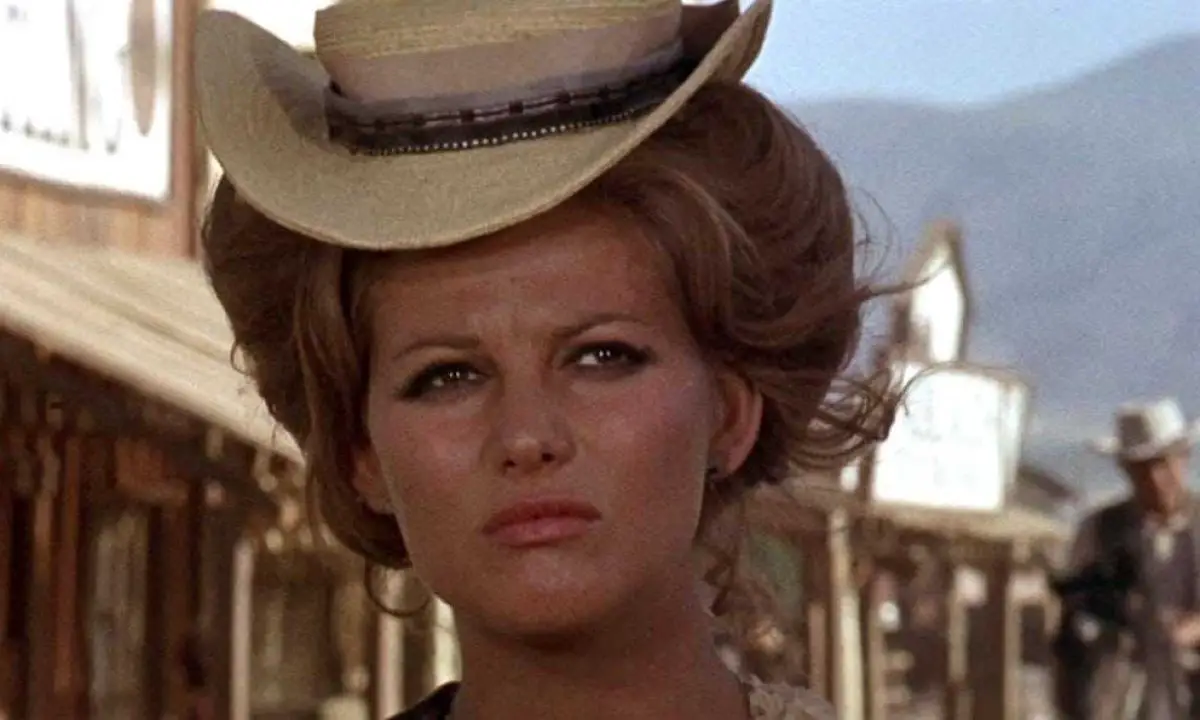
The script of Once Upon a Time in the West is a work of a class above the already solid scripts of Leone’s previous films. It is cohesive, well-thought-out, and free of logical holes. The characters do not say much because they are primarily defined by their actions. However, when they do speak, they have good reasons for it. The dialogues are absolutely excellent, and several of them have rightfully gone down in the history of cinema. These succinct but brilliant exchanges confirm the thesis that often less is more. The individual characters are vivid and well-developed, and their relationships convey emotions and a unique sense of truth. This applies to all the main characters except – paradoxically – the nominal protagonist at the center of the events.
A Meticulous Puzzle of Once Upon a Time in the West
The Man with the Harmonica is another incarnation of the mysterious gunslinger whose past is virtually unknown. While Eastwood’s Man With No Name, despite his taciturnity and aloofness, managed to elicit sympathy and had something human about him, Bronson’s Harmonica is portrayed so minimally that it’s hard to identify with him (although he does have a few iconic lines). The only characteristic that defines him is his desire for revenge on Frank. To achieve this goal, he will stop at nothing.
Frank, on the other hand, is not a typical Western “bad guy” whose role is limited to spreading death and destruction. Henry Fonda’s character was once an ordinary bandit, but over time he developed a taste for power and big money. He thought that moving up the ladder to the role of a behind-the-scenes boss would be a natural step. Everything was going well until the mysterious Man with the Harmonica appeared on the horizon, starting to thwart his plans. Worse still, the newcomer was not driven by typical motives like money and power. Fonda’s character couldn’t figure him out because Harmonica didn’t fit any of the known patterns.
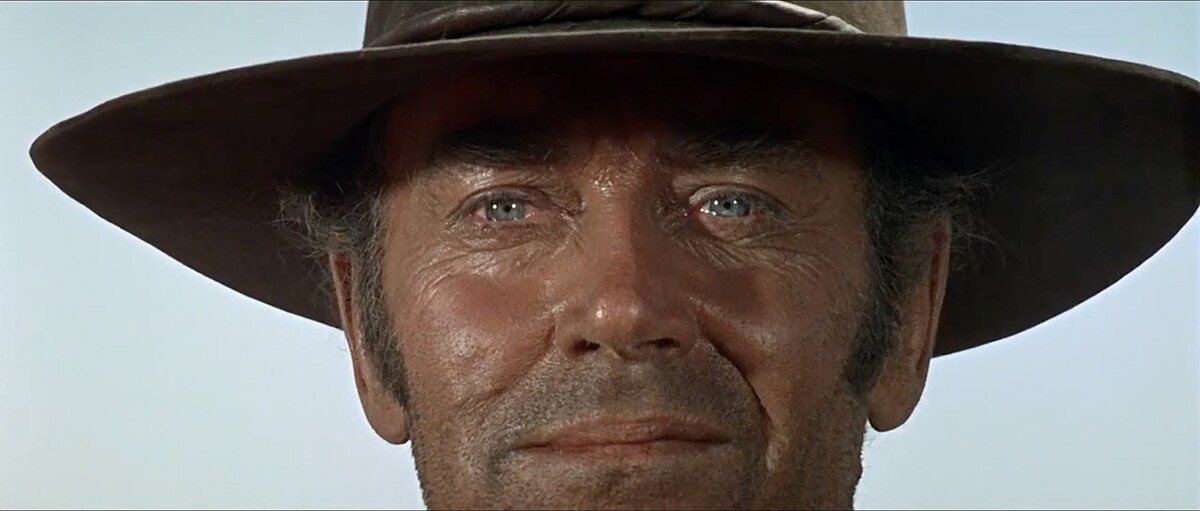
This lack of information gnawed at him. It revealed the painful truth – Frank would forever remain a man of the frontier. A pragmatic, “dollar-thinking” businessman would be content with eliminating Harmonica without needing to understand his motives at all costs. But Frank needs to decipher him. The newcomer knows this, calmly pulling the strings and waiting for the desperate thug to fall into his trap. The confrontation between these two heroes, cut from the same cloth, is for Leone a kind of swan song of the Wild West.
I cannot forget perhaps the most likable of all Sergio Leone’s characters. Harmonica fascinates and commands respect, but he’s hard to like (not to mention Frank). Cheyenne, despite being on the sidelines, is the true embodiment of the fading, mythical Wild West. Jason Robards was considered an outstanding theater actor, best suited for Shakespearean repertoire. Casting him as a bandit-rogue was a very unconventional decision. But Leone once again hit the mark! Cheyenne is a perfectly written and played character, remembered long after the screening. Much of this is also thanks to Ennio Morricone. The composer prepared a nostalgic yet satirical musical theme for him that perfectly sums up not only this character but the entire film.

Jill from Once Upon a Time in the West is the first woman to play a significant role in Sergio Leone’s universe. It was worth the wait, as she is one of the most unconventional and nuanced female characters in the entire genre. She is delicate but also strong and independent. In many films, to emphasize that a female character is “tough,” she is given a weapon and made to fight like a man. Kudos to Leone and his collaborators for not taking the easy way out and focusing on Jill’s resilience and pragmatism. Additionally, contrary to the popular trope, her relationships with men are purely practical and sensible. How many films feature women who initially pretend to be tough but ultimately just want to find the perfect man to take care of them? Claudia Cardinale’s character defies this stereotype.
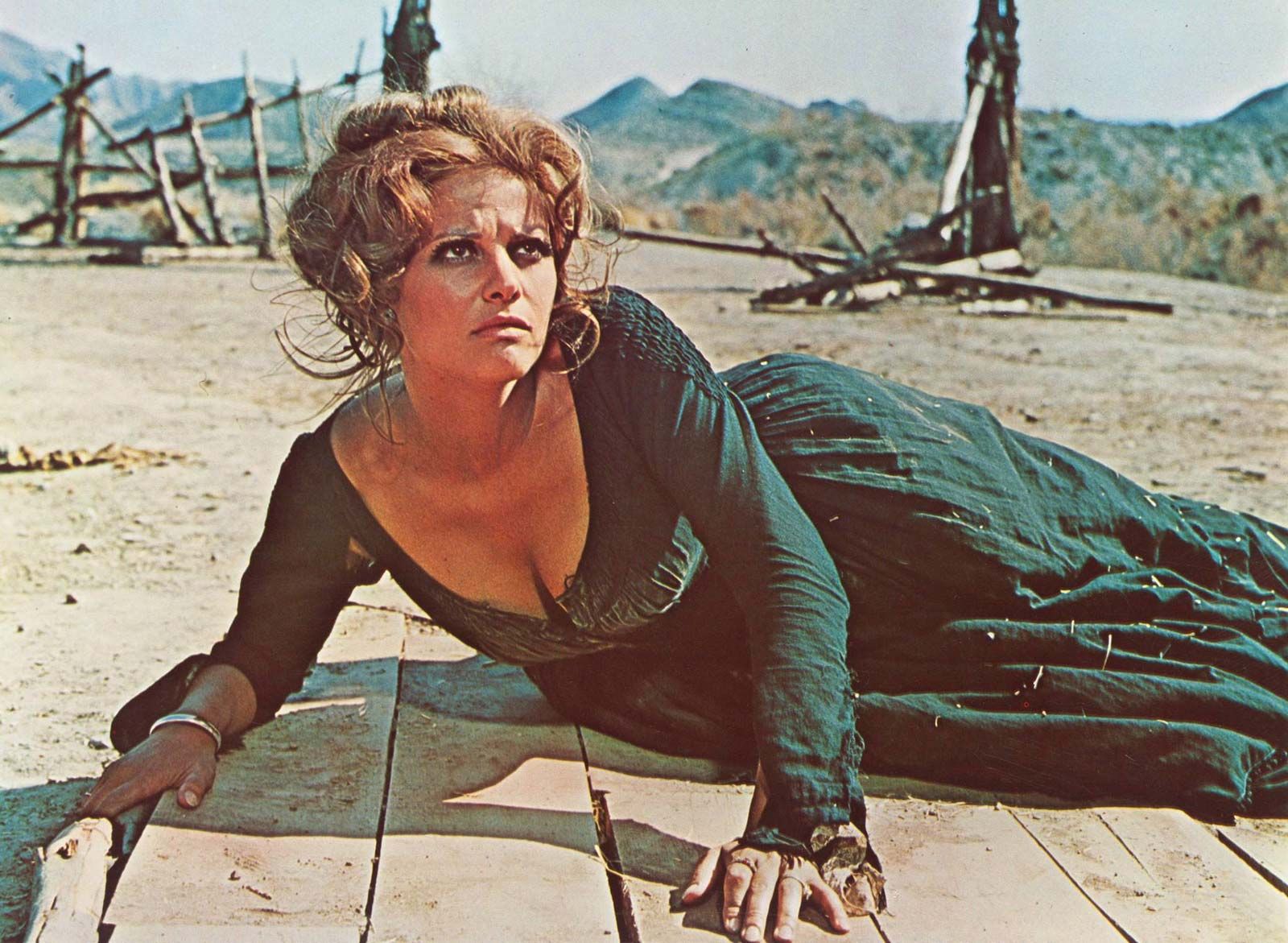
It’s hard for me to write about the technical aspects of Once Upon a Time in the West without resorting to clichés. Sergio Leone reached the pinnacle of directorial skill here. Practically all scenes are small works of art, and several are true masterpieces – listing them would turn into a plot summary. The action unfolds at a leisurely pace but never drags, and there are virtually no “empty moments” separating the memorable scenes. Of course, the whole story could be told more concisely, but then the film would lose its hypnotic rhythm and turn into something incomparably worse. I mentioned that Leone’s hallmark is moments where music and sound perfectly blend with the visuals to create something unique. Once Upon a Time in the West is such a nearly three-hour-long moment.
Words, Words, Words
After The Good, the Bad and the Ugly, Leone began preparing for his next film, the first to be shot in the United States. Sergio didn’t plan another Western; he was tired of the Wild West and wanted to make a gangster film for a change. American producers were opposed – they didn’t start working with a director known for Westerns to have him make something else. The parties eventually reached a compromise. Leone agreed to tackle the Wild West first, and then the producers would greenlight the gangster project. The Italian kept his part of the deal, but the other side did less: after many delays, Once Upon a Time in America finally hit theaters in 1984.

When Sergio Leone set out to write the script of Once Upon a Time in the West, he decided that the new Western would be completely different from the Dollars Trilogy. He wanted to create a quasi-historical epic set in the Wild West. He was inspired by many Westerns he watched avidly during that period, especially the famous High Noon and Johnny Guitar with Joan Crawford and Sterling Hayden (I don’t recommend watching it – the film hasn’t aged well).
He managed to enlist two young talents to help with the writing – film critic Dario Argento, who was in love with Leone’s work (later the creator of the legendary Suspiria), and a young director who, despite having two films under his belt, was unemployed and desperately looking for any job. Of course, I am talking about Bernardo Bertolucci (I probably don’t need to introduce his later achievements).
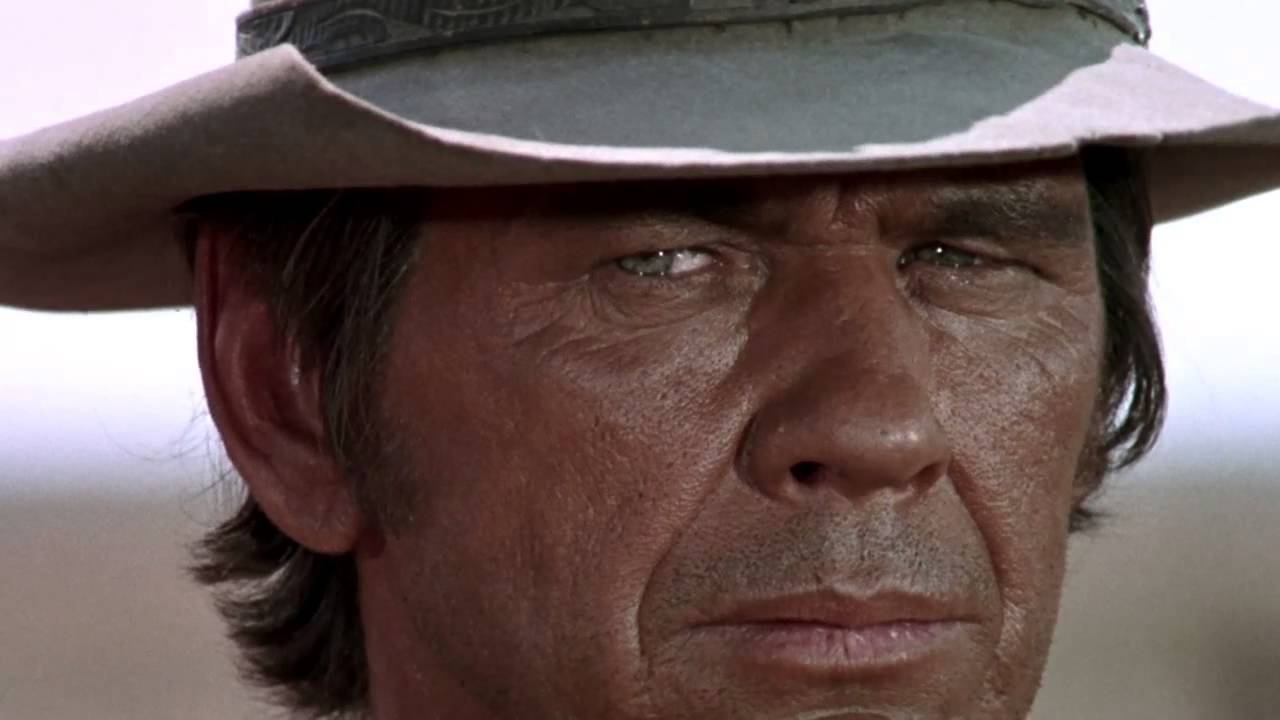
The three of them created an extensive treatment, on the basis of which Leone, along with Sergio Donatti, wrote the final script. At one point, however, a serious dilemma arose – it seemed that the finished film might last up to five hours. Leone absolutely couldn’t allow this, but he didn’t want to lose the unique rhythm of the story either. The screenwriters then undertook the very difficult and surgically precise task of trimming the script. The cutting continued during filming and editing – for example, a shot scene in which Harmonica gets a beating from the sheriff (originally supposed to appear before the first encounter with Cheyenne) didn’t make it into the final director’s cut of Once Upon a Time in the West.
Clint Rides Off into the Sunset
The natural candidate for the role of the mysterious gunslinger with no past was, of course, Clint Eastwood. Leone fervently urged him to participate. To persuade the star to accept the offer, he enthusiastically acted out the entire initial sequence of waiting for the train, paying particular attention to the subplot of a thug trying to deal with a buzzing fly. However, this didn’t make much of an impression on Clint, who was also tired of playing almost the same character for the fourth time. Especially since, once again, the supporting characters were much more interesting than the theoretical protagonist. Therefore, he rejected the offer and instead starred in Hang ‘Em High, where he had the chance to play a more complex character (incidentally, it’s a very good film – ideologically typically American and law-abiding, but in terms of execution, very “Italian”).
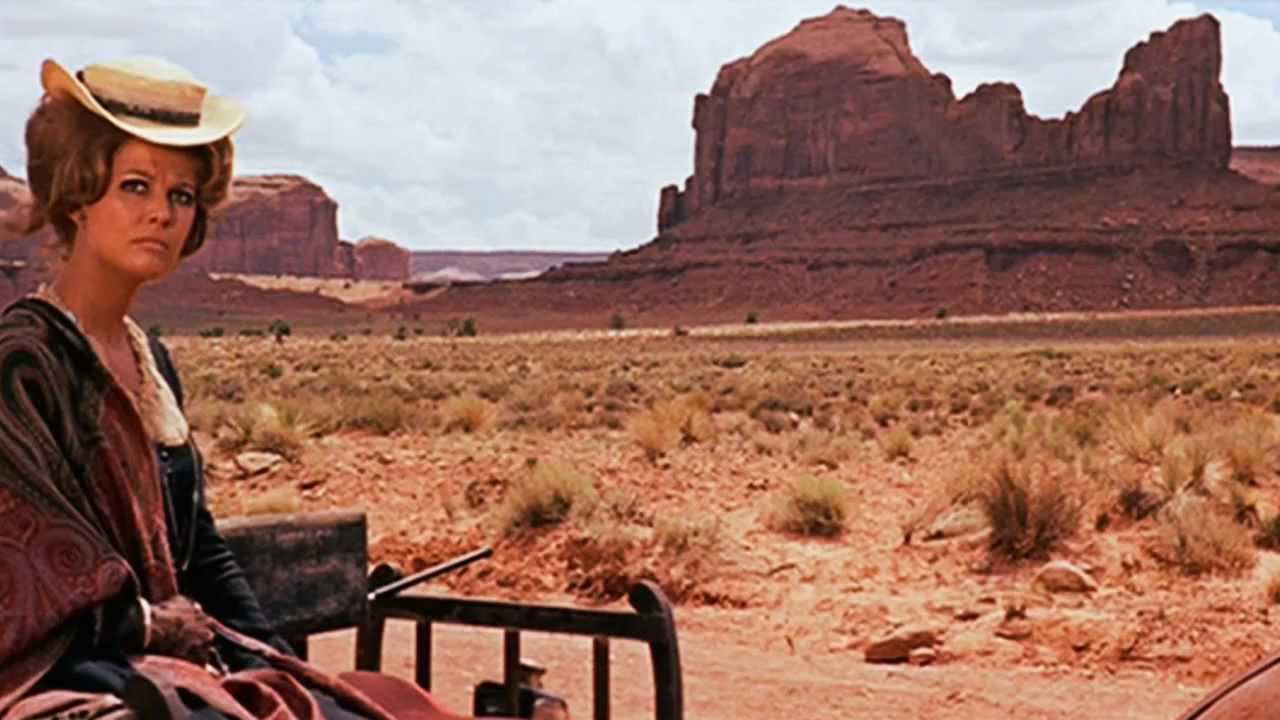
The role of the Man with the Harmonica eventually went to Charles Bronson, who finally agreed to appear in a Leone film. On set, he was as mysterious as his character – he didn’t interact much with the rest of the crew and, while waiting for his scenes, would stand in a corner tossing a ball. Nevertheless, this didn’t prevent him from achieving the status of a cinema legend – he became arguably the most famous American in European cinema. Interestingly, the Italians gave him the biting yet positively connoted nickname “Brutto,” meaning “ugly.” Over time, he also gained recognition in his homeland.
In the era of Once Upon a Time in the West, Leone could afford the luxury of hiring none other than Henry Fonda, one of the biggest American stars of the time. The actor was mainly associated with roles of noble types whom mothers held up as examples to their sons. Therefore, Sergio cast him as the ruthless and heartless Frank. He hoped to shock the American audience with this casting decision.
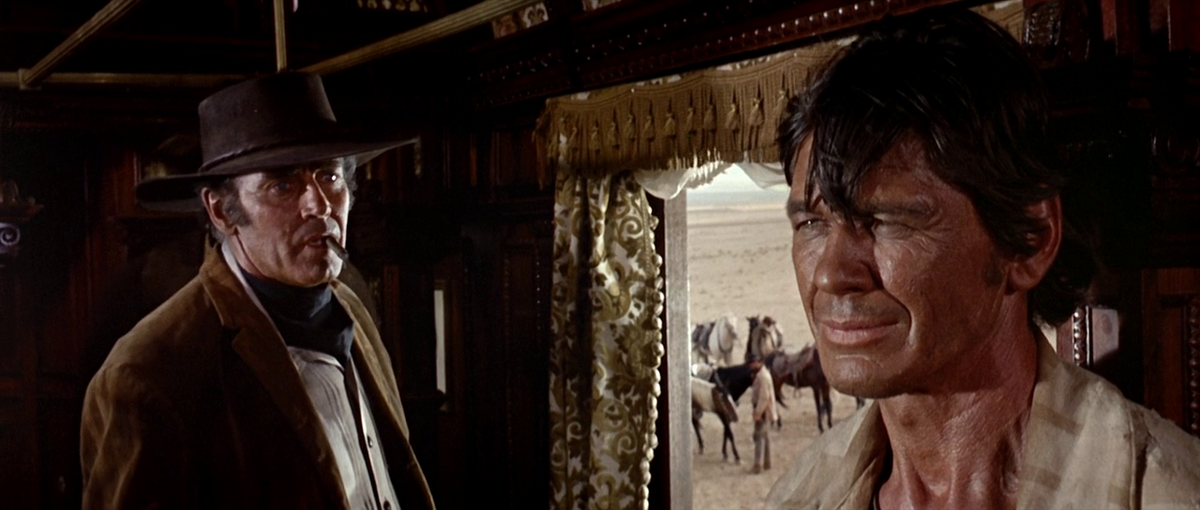
A Touch of Genius and Tragedy
Even during the production of A Fistful of Dollars, Leone wanted the music to be as perfectly synchronized with the visuals as possible. He believed that the best solution would be to play the melodies that would appear in the final film on set. Of course, this wasn’t possible at the time, as the music was composed only after filming had concluded. With the second film – due to the rapid pace of production – there was also no opportunity for Ennio Morricone to deliver the score earlier. By the time of The Good, the Bad and the Ugly, they managed to get closer to the ideal – during the filming of the final sequence in the cemetery, Leone knew exactly what the musical accompaniment would be. However, his dream fully materialized only on the set of Once Upon a Time in the West. Morricone wrote the entire score before filming began, and they managed to record it in advance – the actors and the entire crew were thus constantly accompanied by the appropriate music, which set the rhythm for the entire story, even during editing.
When composing, Morricone employed a genius solution in its simplicity. He wrote a theme for each of the main characters and then, as the action progressed, combined and modified these melodies. Needless to say, this had an incredible effect.
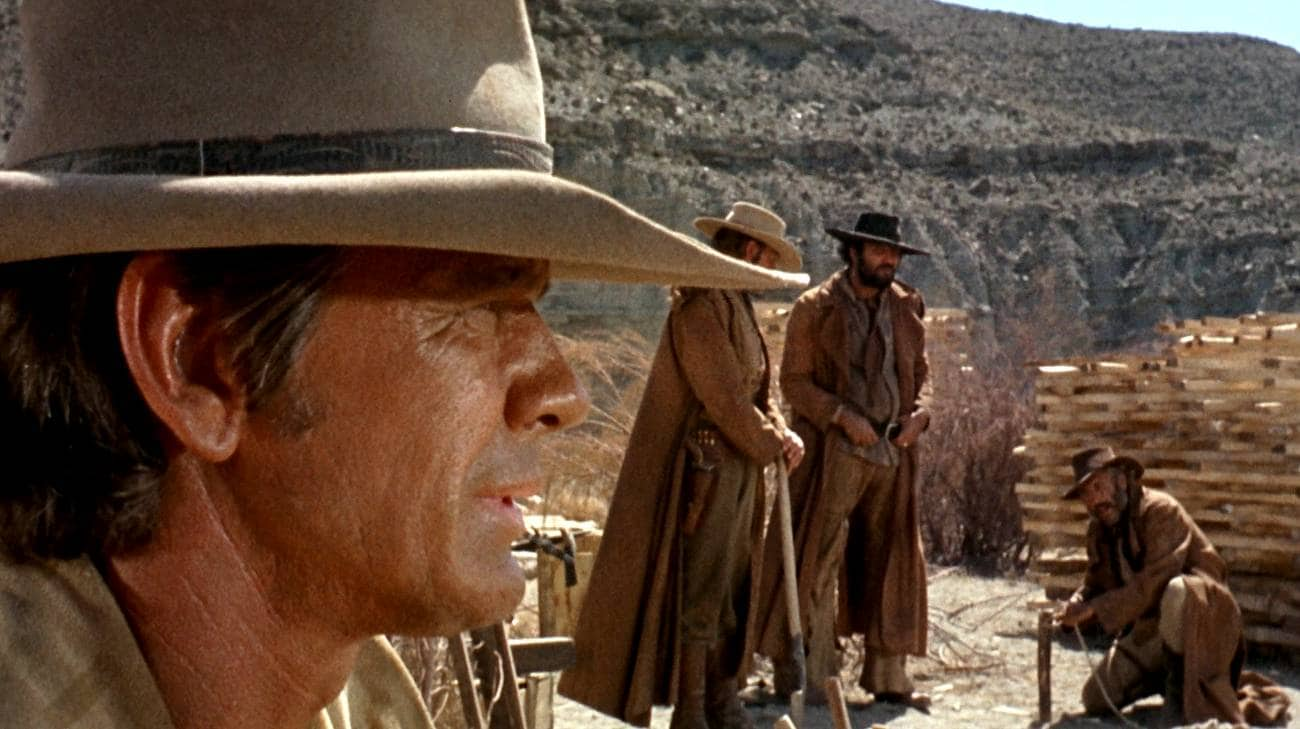
During this period, the Italian composer was greatly influenced by the work of avant-garde American artist John Cage, whose compositions consisted solely of natural sounds. Morricone decided to use the same trick in the famous scene of waiting for the train. Creaking boards, a windmill, and a telegraph served perfectly as musical instruments, creating an incredible atmosphere.
The production of the prologue is tied to a tragic story. One of the three actors involved in it, Al Mulock, committed suicide by jumping out of a hotel window. When he was found, he was still wearing his film costume. He left no note, so the reason for his drastic action remains unknown to this day. One hypothesis suggests that Mulock took his own life because he couldn’t obtain the drugs he needed to function normally while filming in Spain.
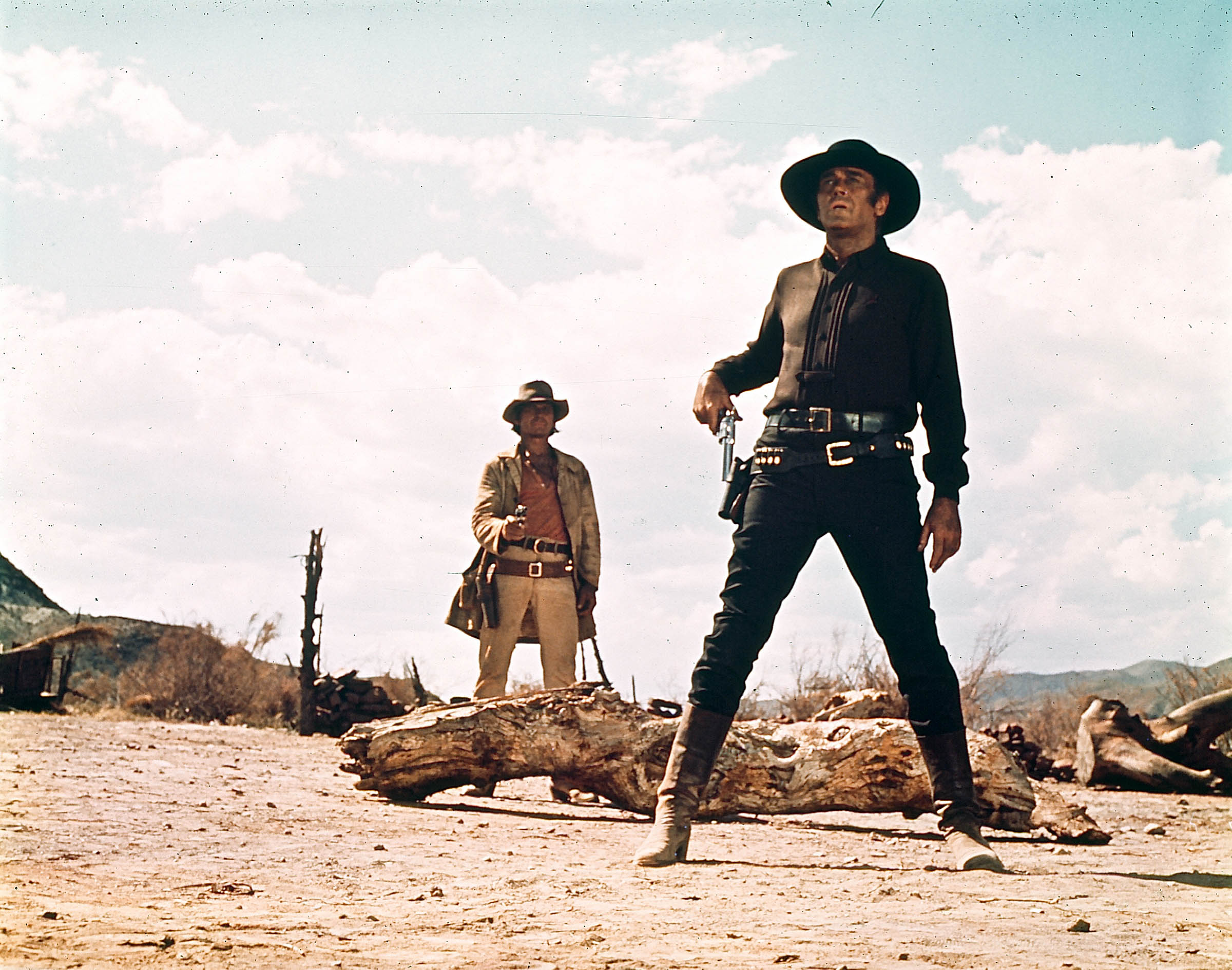
The Never-ending Story
The final version of Once Upon a Time in the West ran for 166 minutes. Paramount deemed this too long for American audiences’ tastes and decided to shorten the film by sixteen minutes (including cutting the final scene with Cheyenne – no joke!). This version, however, flopped in American theaters. Consequently, Leone’s stock fell significantly. Only years later did his magnum opus gain the deserved recognition across the ocean. In Europe, it fared much better – positive reviews were accompanied by satisfactory box office results. French rebellious youth from wealthy homes, marked by the “revolution” of 1968, were particularly impressed. Today, it is hard to find a Western fan who harbors any disdain for Once Upon a Time in the West.
Leone directed four films in five years. However, he significantly slowed down afterward. In 1971, A Fistful of Dynamite with James Coburn hit theaters. Then Sergio spent many years preparing to make his dream project, Once Upon a Time in America. He died during the production of the war film Leningrad. Despite his modest filmography, the Italian is considered one of the greatest directors of the 20th century. He not only revolutionized the Western genre but also changed the language of cinema.
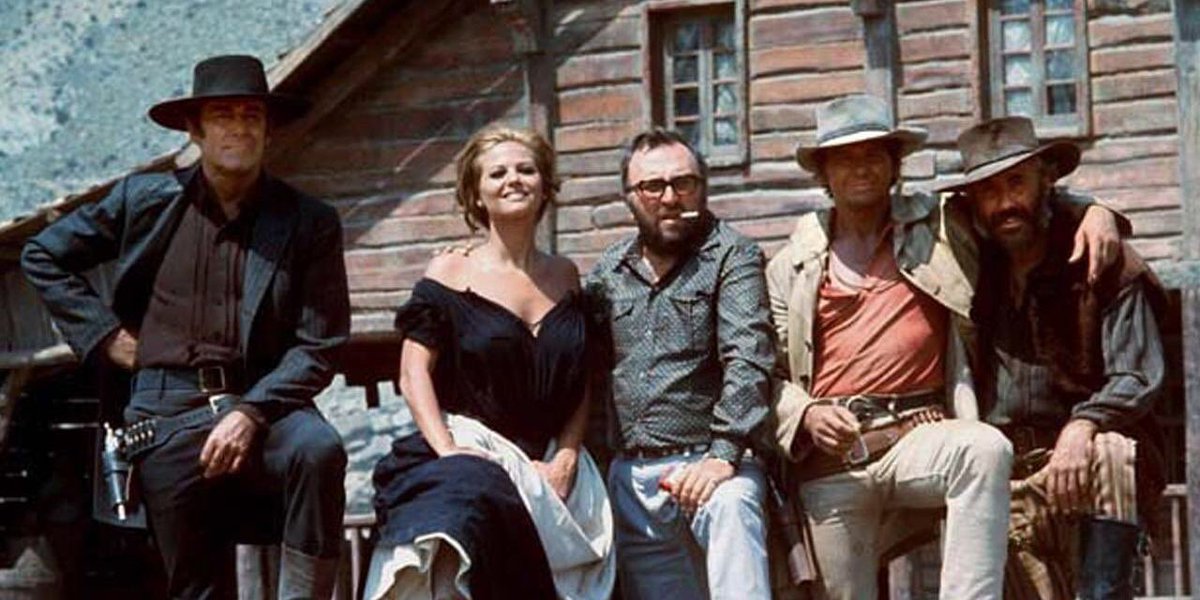
All the Westerns by Sergio Leone I discussed were released in the 1960s. Since then, many more films in this genre have been made. However, most of them can’t compare to these revolver lullabies. Despite some shortcomings and weaker moments, the Dollars Trilogy is still a great watch – I’m sure I’ll return to these Westerns every few years. Once Upon a Time in the West is one of the few films that will probably never bore me. While writing this article, I watched it twice in a few days. And I’m already looking forward to another viewing.

